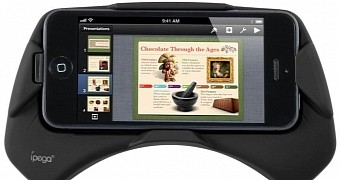Six years ago, shortly after introducing the iPhone 3G, Apple filed a gaming-related patent with the United States Patent & Trademark Office. In the documentation, it revealed plans to fit existing iDevices, including the iPhone and iPod touch, with joysticks and D-pads, for traditional button-based gaming.
Had the USPTO granted Apple the invention then, portable gaming could have been a lot different today. Sadly, that didn’t happen and things have changed a lot since, making the invention somewhat useless (at least for Apple) today. Nonetheless, it’s interesting to see what Apple had in mind as early as six years ago regarding gaming on the go.
Apple knew touch controls would be less than ideal for gaming
Ask anyone who takes their gaming seriously what they think about touch-based input, and they’ll all tell you that it simply doesn’t work. Not unless you’re playing match-three puzzlers all day long anyway.
For hardcore genres, like racing, shooting and third-person RPGs, physical controls are not only preferable, they’re imperative. Apple realized this much back in 2008, when it stated the following:
“The same screen used for viewing an avatar's activities is used to control the avatar. This arrangement causes the user's fingers block the action.”
It therefore filed an invention titled “Accessory for playing games with a portable electronic device,” and essentially described a gamepad that lets you slide the iDevice inside to have the buttons surround it.
The iPhone maker said it wanted this accessory to have wireless functions for ad-hoc multiplayer gaming, buttons, joysticks, and D-pads, microphones, cameras and camera lenses, speakers, rumble (vibration), motion detection, and even a second screen in some embodiments (reminiscent of the Nintendo DS).
Interestingly, the market is chock full of solutions identical to the one described by Apple in its newly-granted patent.

 14 DAY TRIAL //
14 DAY TRIAL //